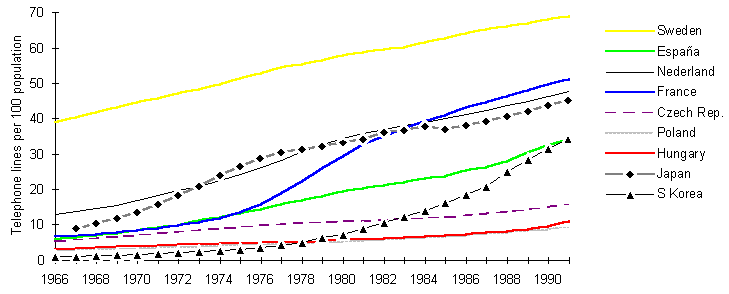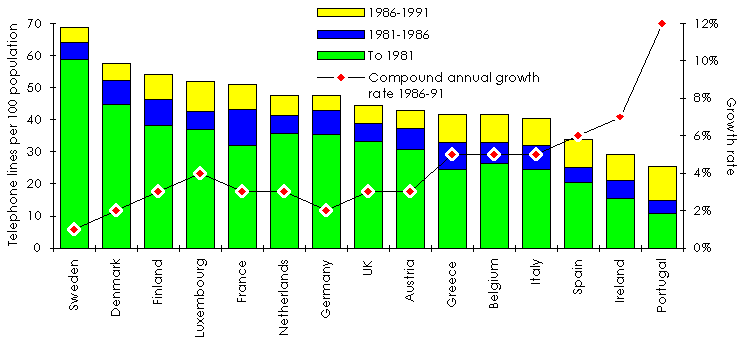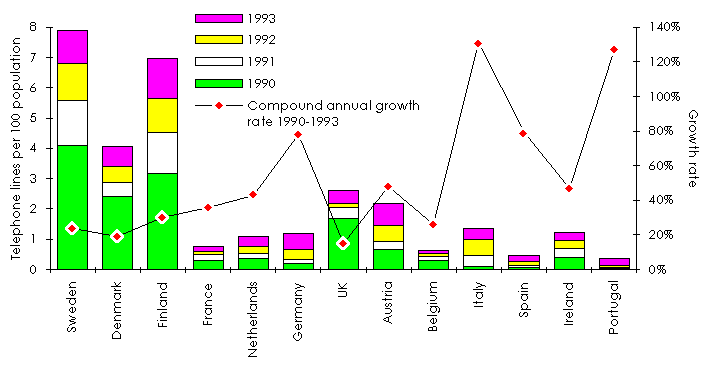
As the figure shows, France has risen from a relatively low level of telephone penetration in the 1960s to a relatively high level by most standards. It lags Sweden, but that country is something of a special case. Growth in France, while rapid by European standards, has been slow when compared with that of South Korea. The lateness of the growth is shown by its being after the surge in Japanese growth, rather than before.
Figure Growth in teledensity of
selected countries 
Source: UIT
France stands in a respectable position in the European Union ranked list. Its spurt of growth in the early 1980s is particularly noticeable.
Figure Recent growth in teledensity
in the European Union 
Source: Siemens AG
While the position of France in conventional telephony is good, both by European and global standards, in mobile telephony the picture is very different. France has been slow to develop its market and reluctant to admit competition. As the figure shows, it lags Italy and Ireland.
Figure Recent growth in mobile
telephony in Europe 
Source: Siemens AG
Thus France in the mid-1990s has a technically sound and ubiquitous network. However, its market has been reformed only slowly and under pressure from the European Commission in Brixelles and foreign regulators. France Telecom remains the dominat supplier.
[ Introduction | Invention | Marketing | French telecommunications | France Télécom | French videotex | Messagerie Conviviale | Unnatural market | Cour des Comptes | Quickening pace of technology and politics | Conclusion | Bibliography | Chronology | Web links ]
Copyright © Ewan Sutherland, 1995.
http://www.georgetown.edu:80/sutherland/minitel/telecoms_in_france.html